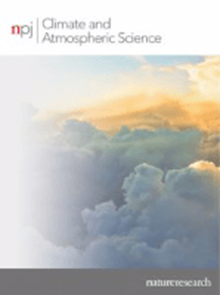揭示气旋期间未来地中海降水悖论的驱动因素
IF 8.4
1区 地球科学
Q1 METEOROLOGY & ATMOSPHERIC SCIENCES
引用次数: 0
摘要
全球气候模式和高分辨率大气-海洋耦合区域气候模式都预测整个地中海地区将出现干燥趋势,同时与气旋有关的降水也将增加。然而,只有高分辨率模式能够捕捉到在三种排放情景中驱动这些变化的物理机制,即增强的水汽输送过程促进了气旋活动。这些结果突出了精细尺度模型对于理解未来地中海极端水文气候的附加价值。本文章由计算机程序翻译,如有差异,请以英文原文为准。

Unravelling drivers of the future Mediterranean precipitation paradox during cyclones
Both global climate models and a high-resolution atmosphere-ocean coupled regional climate model project a drying trend across the Mediterranean region, alongside an increase in cyclone-related precipitation. However, only the high-resolution model captures the physical mechanisms driving these changes across three emission scenarios, namely, enhanced moisture transport processes fuelling cyclone activity. These results highlight the added value of fine-scale modelling for understanding future Mediterranean hydroclimatic extremes.
求助全文
通过发布文献求助,成功后即可免费获取论文全文。
去求助
来源期刊

npj Climate and Atmospheric Science
Earth and Planetary Sciences-Atmospheric Science
CiteScore
8.80
自引率
3.30%
发文量
87
审稿时长
21 weeks
期刊介绍:
npj Climate and Atmospheric Science is an open-access journal encompassing the relevant physical, chemical, and biological aspects of atmospheric and climate science. The journal places particular emphasis on regional studies that unveil new insights into specific localities, including examinations of local atmospheric composition, such as aerosols.
The range of topics covered by the journal includes climate dynamics, climate variability, weather and climate prediction, climate change, ocean dynamics, weather extremes, air pollution, atmospheric chemistry (including aerosols), the hydrological cycle, and atmosphere–ocean and atmosphere–land interactions. The journal welcomes studies employing a diverse array of methods, including numerical and statistical modeling, the development and application of in situ observational techniques, remote sensing, and the development or evaluation of new reanalyses.
 求助内容:
求助内容: 应助结果提醒方式:
应助结果提醒方式:


